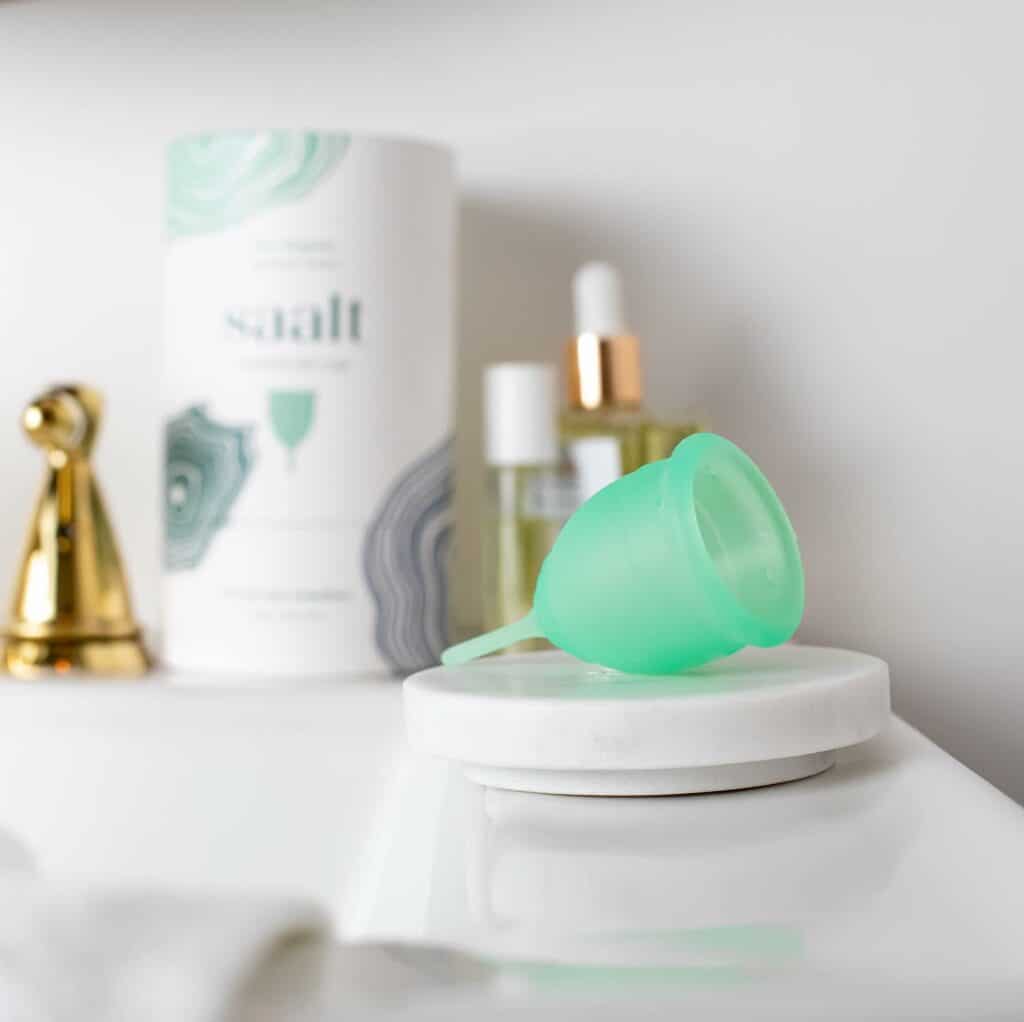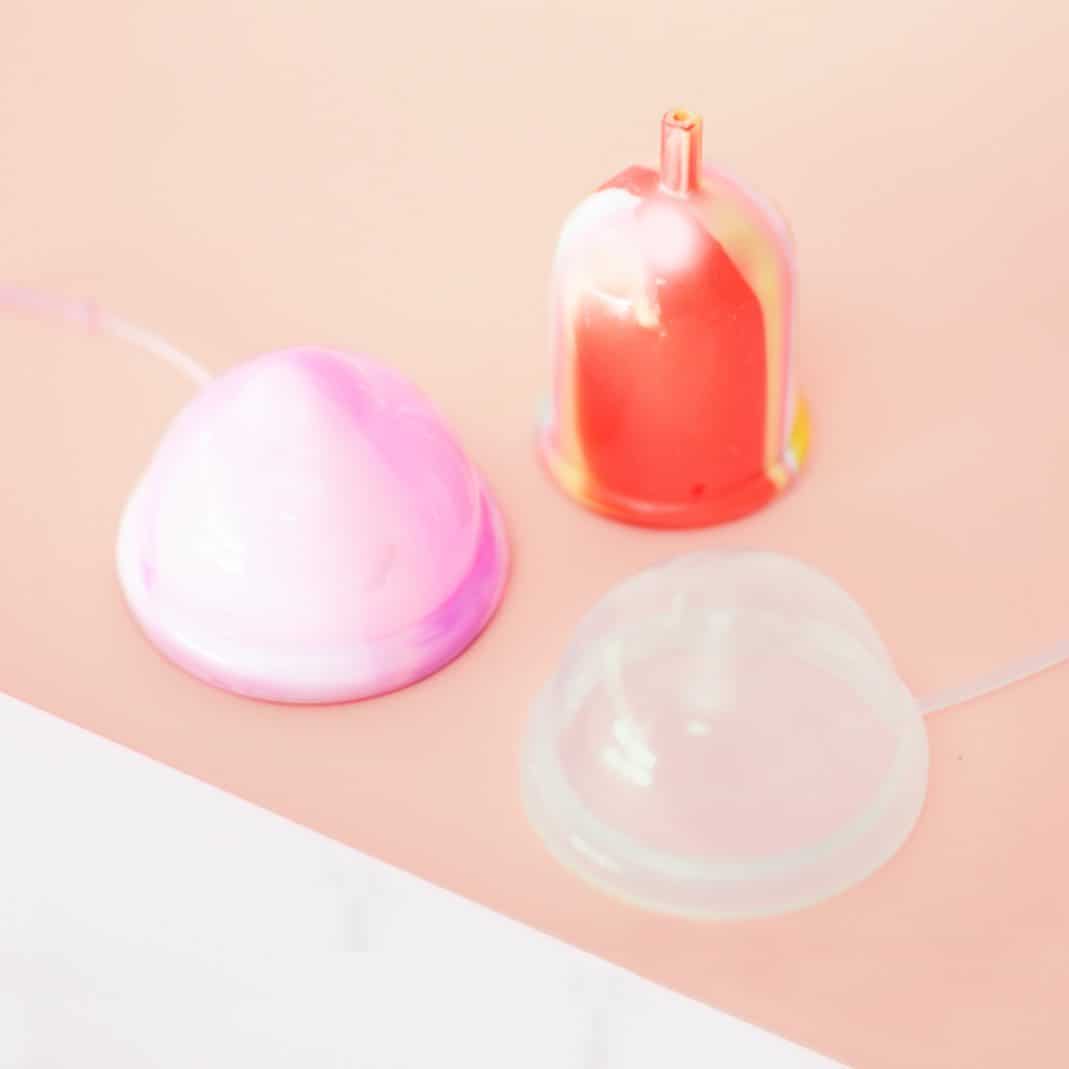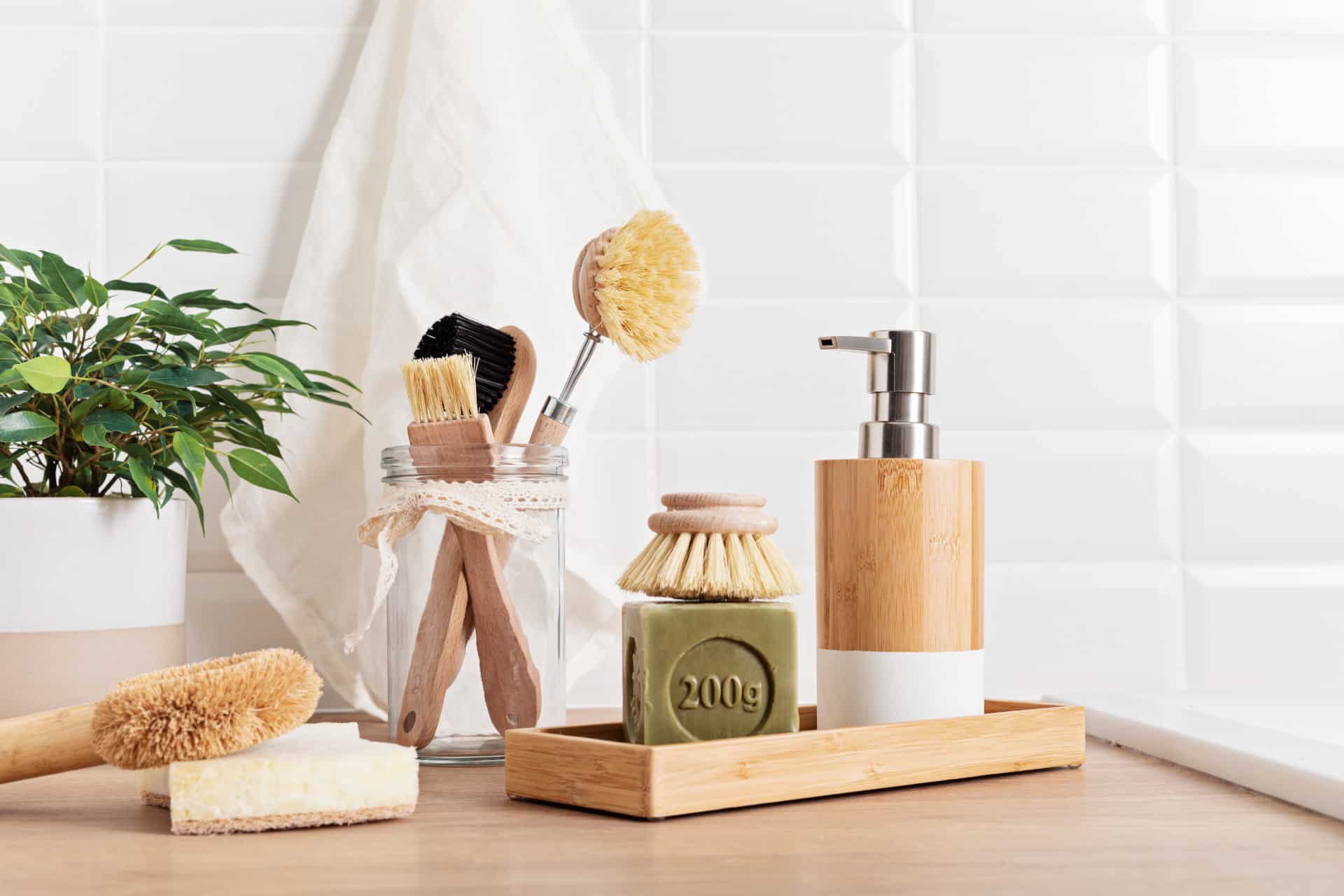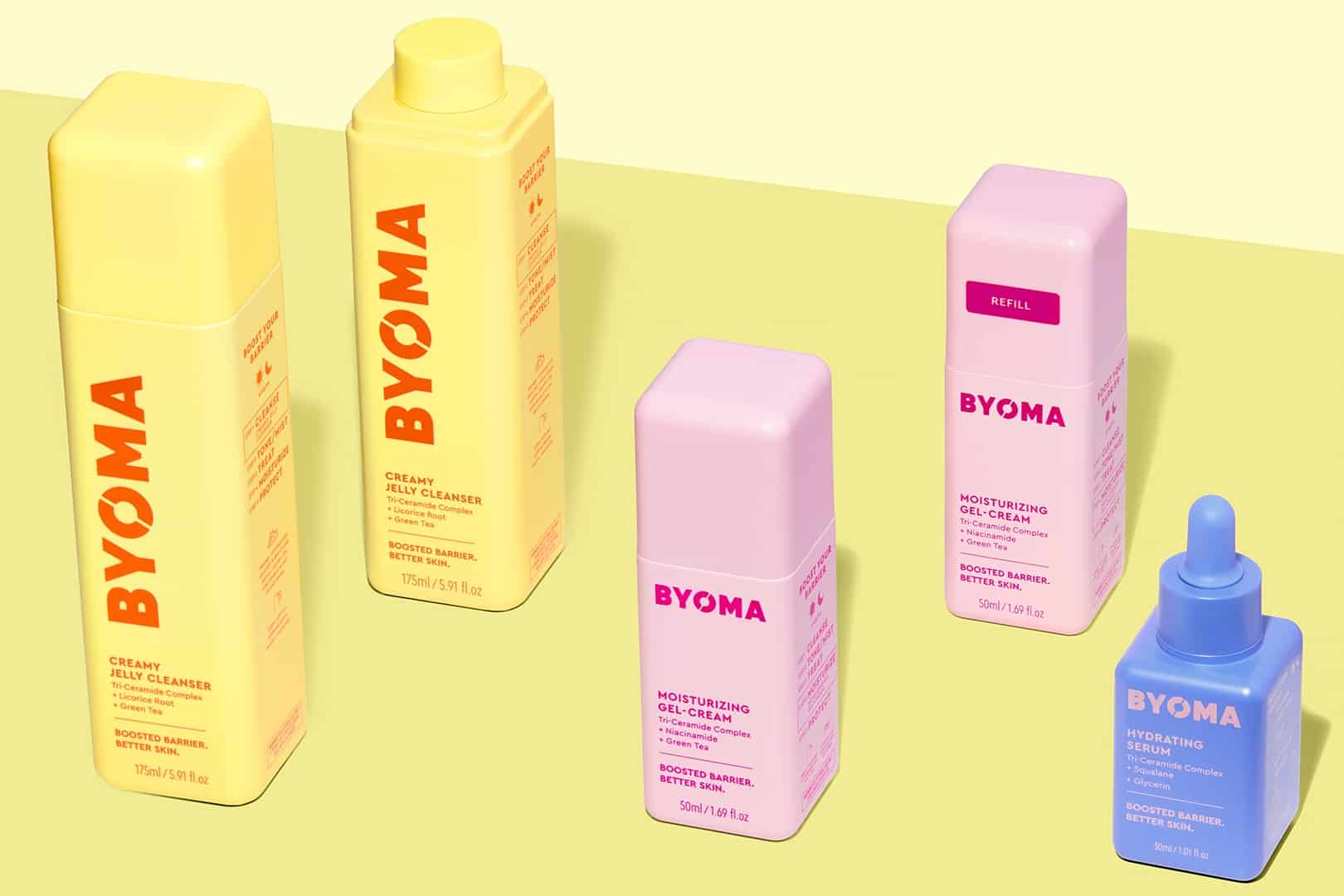The Best Menstrual Cups & Discs For a Zero-Waste Period

Menstruation products are a surprising contributor to the waste crisis, with hundreds of thousands of tons thrown away every year. There are many sustainable alternatives including menstrual cups and discs, and today we’ll be taking a look at them.
Disposable Sanitary Products
Disposable sanitary pads represented a huge jump forward in women’s lives when they first came to be. Cumbersome, homemade cloth pads which had to be pinned to underwear were replaced in 1969 by the more familiar pads we see today, with adhesive backing that allows the pad to stick to underwear instead – much more comfortable and much more practical.
The ease of simply using a pad and then disposing of it rather than painstakingly cleaning reusable cloth versions each month also felt like a liberation. Tampons became commercial in the 1930s (although variations of them had been used the world over for centuries) – and the first-ever tampon with an applicator became available in 1936, taking the discomfort and guesswork out of tampon use and introducing it as a practical alternative.
All in all, the advent of easy to use, disposable, and hygienic menstruation products was a mark of progress that allowed women’s lives to get that much wider – there was much less need to stay close to home so you could easily change, and slim pads made it easy to be discreet.
However, unfortunately, disposable sanitary products are no friend to the environment. People in the US buy about 5.8 billion tampons a year, and they account for around 200,000 tons of landfill waste per year. Since they are made from 90% plastic, they won’t even think about biodegrading for about 1000 years.
The production process is also filled with toxic chemicals, as substances such as chlorine are used to bleach the products. Not only is this bad for the user’s health, potentially causing health problems and irritation over time, but it’s also just the tip of the iceberg of toxic production processes and waste chemicals involved in creating these products. Additionally, they are also a massive contributor to public health issues such as drain and sewer blockages, similarly to wet wipes.
The Sustainable Alternatives
Luckily, there are many sustainable alternatives to disposable sanitary pads and tampons.
The reusable pads of the past have made somewhat of a comeback, but with a slim design more similar to the disposable ones we’re familiar with and with hypoallergenic, antiseptic, and anti-odor materials such as bamboo fibers making up their main bodies.
Reusable tampon applicators are also available, and although reusable tampons are uncommon, biodegradable, sustainably produced organic options are easy to get hold of. More recently, ‘period underwear’ has also become popular, which is absorbent underwear which can be worn alone or in conjunction with another menstruation product to soak up menstrual blood.
Menstrual Cups & Discs
A highly popular sustainable menstrual care alternative is the menstrual cup (or disc).
These are similar in concept to the humble tampon; they are inserted into the vagina and prevent menstrual blood from exiting the body. However, unlike a tampon, instead of absorbing the blood they catch it in a small ‘cup’, which is then removed, emptied, rinsed, and reinserted as appropriate.
They also have an advantage over tampons in that they are not drying to the vagina. While tampons do their job of absorbing menstrual blood very well, they also absorb the natural lubricants and other secretions the vagina produces, causing dryness and irritation. Since the menstrual cup is not based on absorption, it catches the menstrual blood while otherwise leaving the vagina to its business.
There is also significant evidence to suggest that using cups or discs reduces the occurrence of painful cramps in some users, and the risk of Toxic Shock Syndrome (associated with tampon use) is also diminished.
A menstrual cup or disc can last for years (assuming proper care) and eliminates the need for any single-use products, significantly reducing the impact of menstruation on the environment while offering users a healthier, more comfortable period.
Menstrual Cups vs. Menstrual Discs
Within the world of menstrual cups, there are unsurprisingly many different options, and it’s important to choose what’s right for you.
Unlike tampons and pads cups are not one size fits all, and you may want to make a different choice based on the position of your cervix, the length of your vagina and whether you’ve given birth or not.
You will also need to choose between a menstrual cup and a menstrual disc. Cups look like little goblets, with the ‘cup’ part being about an inch wide and an inch and a half deep, with an attached stem that extends down into the vagina and can assist with removal and easy insertion. A menstrual cup sits in the vaginal canal, in the same position as a tampon.
A disc looks more like a frisbee. It has no stem and comprises a relatively flat disk of silicon with a thick rim, which sits tucked behind the pubic bone at the base of the cervix.
Both devices collect your menstrual blood and provide excellent protection against leaks, but use different insertion and removal methods. A cup must be folded to insert, and when it expands it creates a suction with the vaginal walls which creates the seal. To remove it, the base of the cup is squeezed to break the seal. A disc is pinched to insert and pushed into place behind the pubic bone; to remove, a finger hooks under the thick rim.
There are a couple of key differences between cups and discs. One distinct advantage of discs, attractive to many users, is that they can be worn during sex, enabling mess-free fun during that time of the month. It’s not possible to have sex with a menstrual cup in place, because it sits in the vaginal canal.
Environmentally speaking, a cup is entirely reusable, eliminating waste – but moving to an entirely reusable product can be a bit of a transition for some. While we recommend reusable silicon menstrual discs, disposable discs are also available. While you won’t have a waste free period, these can be used safely for up to 12 hours at a time, meaning that the amount of waste produced is still reduced significantly. These can be a good stepping stone between single-use and reusable products.
There are no notable disadvantages of cups and discs, other than that it can take a couple of cycles to feel confident with insertion and removal. It’s also worth bearing in mind that menstrual cups and discs need to be cared for properly. A quick rinse under hot water between insertions is fine, but it’s important to boil them at the end of each period to disinfect completely, and to store them hygienically between periods. If this will not suit your lifestyle for any reason, then you should examine alternative options in sustainable menstruation products.
The Best Menstrual Cups & Discs
We’ve curated a list of 7 zero-waste period alternatives for you to choose from. Any of these is a great choice for anyone looking to reduce waste and have a more eco-friendly period.
1. Saalt Cup

| Price | $29 |
| Features | 100% medical grade silicon, soft feel, 2% of every purchase goes to funding menstrual care, facilities and girls’ education in developing countries |
| Buy On | Saalt.com |
2. Lunette Cup

| Price | $39.99 |
| Features | Easy carry pouch made from recycled plastic bottles, fully recyclable zero-waste packaging, range of colors |
| Buy On | Lunette |
3. MCUK Cup

| Price | $30 |
| Features | certified vegan, ethical business awards winner simple size guide |
| Buy On | MCUK |
4. Eden Cup

| Price | $21 |
| Features | FDA approved, zero waste packaging |
| Buy On | Eden |
5. Nixit disc
| Price | $42 |
| Features | 100% medical-grade BPA free silicon, holds up to four tampons worth, packaging designed to be reusable |
| Buy On | Nixit |
6. Lumma disc

| Price | $45 |
| Features | silicon string’ for easy removal, storage pouch |
| Buy On | mylumma.com |
7. FLEX discs

| Price | $29 |
| Features | Disposable discs. up to twelve hours, no need to clean and store, vegan, medical-grade and body-friendly, sustainably made, reduce unnecessary waste by up to 60% |
| Buy On | Amazon |




